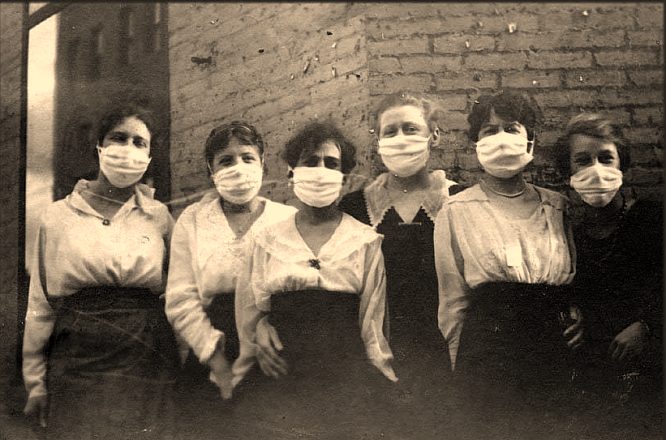
I belong to an intellectually stimulating club that meets every Monday afternoon from October to April. It was started in 1887 by Sarah Short Barnes (Mrs. C.P.) and is cleverly named Monday Afternoon Club. "Its object shall be the encouragement of culture among woman" as quoted in its constitution.
That is not a photo of us with masks on!
Each Monday, a member presents a 30-minute research paper on a subject within the guidelines of three major topics. This year the topics were Oh, Those Victorians; Historical Villains; and, Voyages.
Today's paper, under Historical Villains, was Pathology of a Killer. No, not a human killer, but the 1918 flu pandemic in which 50 to 100 million people died. It is one of the deadliest natural disasters in human history.
Between 1918 and 1920 there were two waves of the Spanish flu, the second of which was deadlier than the first. The first wave mostly affected the sick, infants, and the elderly.
The second wave, though, struck down healthy young adults particularly soldiers and sailors during WWI. Close troop quarters and massive troop movements hastened the pandemic among malnourished and combat-stressed soldiers with weakened immune systems.
The presenter also read from a family history that her great-grandfather had written about the death of his own soldier son in an Army camp here in the city. It was quite moving. This woman's father and his twin brother were born after the death of their father.
It was chilling to hear the account of the new recruits standing outside the Army camp waiting to get in while inside the camp soldiers were dying of the flu.
My own father was born in June 1919 and I sometimes think that my grandmother and her unborn child - my father - could have been casualties of the disease.
No comments:
Post a Comment